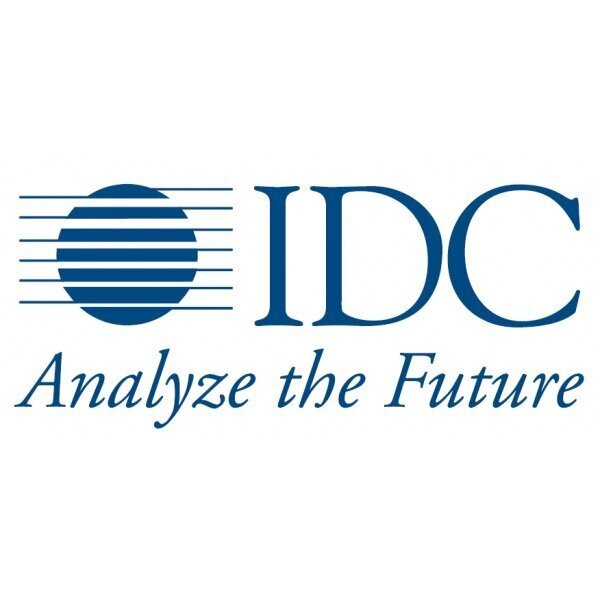If extended reality (XR) offerings – including virtual reality (VR), augmented reality (VR) and mixed reality (MR) – are to realize their full market potential, the organizations participating in this complex sector would benefit to double down on efforts to establish industry-wide open technical specifications and business conventions to integrate operations across the entire ecosystem.
As it stands today, the outlook for this market is already bright. According to new research by global technology intelligence firm ABI Research, nearly 40 million AR smart glasses will ship by 2027. The total augmented and mixed reality market will surpass $220 billion in the same year.
Worldwide shipments of Augmented Reality (AR) headsets are forecast to decline 8.7% year over year to nearly 260,000 units by the end of 2022, according to new data from the International Data Corporation (IDC) Worldwide Quarterly Augmented and Virtual Reality Headset Tracker.
Read MoreWith investment and interest growing exponentially, the augmented reality market is set to grow at an equally significant rate over the next five years. According to ABI Research, nearly 40 million Augmented Reality (AR) smart glasses will ship in 2027, with the total augmented and mixed reality market surpassing $220 billion in the same year.
Read MoreAfter a tumultuous 2020, the need for digitization and keeping workers connected became crystal clear for many. This is true in all industries, but especially for industrial markets where workflow complexity, knowledge retention and share, and the financial impact from downtime and other inefficiencies are particularly severe.
Read MoreAfter a tumultuous 2020, the need for digitization and keeping workers connected became crystal clear for many. This is true in all industries, but especially for industrial markets where workflow complexity, knowledge retention and share, and the financial impact from downtime and other inefficiencies are particularly severe.
Read MoreTouchscreens and voice controls are becoming the most common embedded infotainment controls in high-volume makes, but automakers are still attempting to differentiate themselves with novel human-machine-interfaces (HMI). From intelligent voice assistants to novel jog dials to non-touch gesture controls and more, innovation is continuing to be brought into automotive interiors.
Read MoreOver these next few months, the post-pandemic landscape will begin to take shape. Technologies like 5G, Artificial Intelligence (AI), Augmented Reality (AR), IoT, and those enabling smart cities and the smart home will play pivotal roles in reshaping businesses, verticals, and economies around the world.
Read MoreGlobal tech market advisory firm ABI Research examined the current Augmented Reality(AR) market and identified 12 AR solution providers in both consumer and enterprise markets that are leading in their area of expertise through novel solutions.
Read MoreThe ongoing pandemic and lockdowns have exploded social media usage and increased traffic in online shopping platforms, forcing many brands to embrace emerging technologies such as Augmented Reality (AR) and virtual stores to remain competitive and engaged with their customers.
Read MoreWhile the COVID-19 pandemic crippled some markets, it also presented notable opportunities to others. Similar to the uptick products like Zoom and Microsoft Teams have seen, Augmented Reality (AR) has been forced into opportunity around remote worker enablement, compounding the already strong growth seen in the enterprise thanks to high-value use cases like remote assistance, training, and workflow instruction.
Read MoreFrost & Sullivan’s recent analysis, Empowering the Future of VR/AR Content Consumption through 5G, covers seven virtual reality (VR)/augmented reality (AR) application areas and their use cases.
Read MoreGrowth in worldwide and European* AR/VR spend will decline in 2020 compared to the pre-COVID-19 forecast scenario according to the June release of the International Data Corporation (IDC) Worldwide Augmented Reality (AR) and Virtual Reality (VR) Spending Guide. Marked reductions in IT spend and an economic downturn due to the pandemic will slow worldwide AR/VR spend to $10.7 billion — a tempered 35.3% growth from the $7.9 billion spent in 2019. But the long-term outlook remains strongly positive — IDC estimates a five-year compound annual growth rate (CAGR) in AR/VR spending of 76.9% worldwide in 2019–2024 to reach $136.9 billion by 2024.
Read MoreStrategy Analytics predicts a strong recovery for the global Augmented Reality (AR) and Virtual Reality (VR) markets in 2021 after COVID-driven contraction in 2020. This recovery is expected to be spurred on by a 6 fold increase in XR (the combination of AR and VR) shipments, recent consumer-friendly innovations to AR headsets, and the adoption of smartphone-tethered VR.
Read MoreThe mobile augmented reality (AR) market is projected to have an impressive surge in growth prospects in the short-term and long-term forecast, reaching a valuation of $24 billion by 2030 as reported by a study from Future Market Insights (FMI).
Read MoreThe global augmented reality (AR) and virtual reality (VR) market is expected to grow by $125.19 billion during 2020-2024 as the advances increase AR/VR’s applicability to new areas, and major players in AR/VR merge and acquire other firms, according to a study by Technavio.
Read MoreThe Indian software market grew by 16.0% year over year (YoY) in 2H19 (July- December of 2019), compared to 2H18 (July- December of 2018). However, the YoY growth is estimated to fall to 3.8% in 2H20, with a CAGR of 7.6% from 2019 to 2024.
Read MoreA study from Frost & Sullivan claims that by 2024, the artificial intelligence (AI) market for surgery will reach $225.4 million up from $69.1 million in 2019. The use of AI and analytics in conventional operating rooms will help hospitals address inefficiencies and clinical challenges physicians face when performing surgery, according to this new study.
Read MoreAugmented Reality (AR) smart glass manufacturers continue to invest and improve their AR devices, despite the intense competition of smartphones and the uncertainty in the consumer market in terms of smart glasses massive adoption, according to ABI Research.
Read More

















